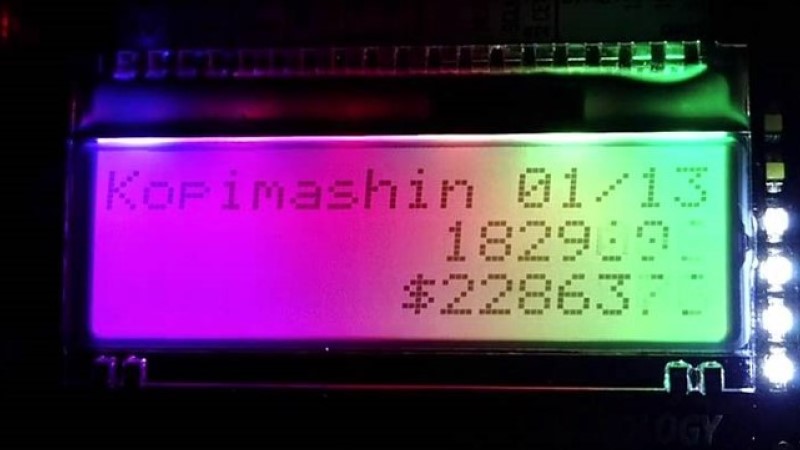
Module Outline
After three thousand years of explosion, by means of fragmentary and mechanical technologies, the Western world is imploding. During the mechanical ages we had extended our bodies in space. Today, after more than a century of electric technology, we have extended our central nervous system itself in a global embrace, abolishing both space and time as far as our planet is concerned. - Marshall McLuhan, Understanding Media, 1964
Following on from modules on photography, this course presents the artwork of the post-mechanical age. Dealing broadly with what might most succinctly be called "New Media" art, the module presents for discussion and analysis the work of artists whose media of choice are those of the latter twentieth and early twenty-first centuries, from film and video, through sound and electric light, to cybernetics, robotics, software, computer games, and the codes, structures and processes of the Internet itself.
The history of art is in many respects the history of artistic media and materials, and this has perhaps never been more visible than in the embrace by artists of the rapidly developing technologies of the second half of the twentieth century onwards. Over the Spring term, lectures will cover topics including: early experiments with autonomous, moving robotic machines (Jean Tinguely, Bruce Lacey); films by artists, (Andy Warhol, Kenneth Anger, Martha Rosler, Douglas Gordon...); groundbreaking exhibitions such as the Cybernetic Serendipity exhibition at the ICA (1968); work with television and video (Nam June Paik); prosthetic cyborg investigations (Stelarc, Marcellí Antúnez Roca); bio-informatic projects (Eduardo Kac); virtual reality (Charlotte Davies) activist art hacking (Mark Napier), software and video game art (Cory Arcangel), art online (Eva & Franca Mattes) and more.
Students will be asked to consider the particular issues of production, reception and display / exhibition / curation of new media art in terms of its material / immaterial forms and its social, political and historical contexts, as well as relate the issues raised by new media artists to their own experiences and lives as citizens of an increasingly digital, technologically-mediated world. Particular attention will be paid to the institutionalisation of new media art by the art world (see, for example, the accession of video games to the collection at MoMA) and the problems such work poses in terms of collecting, storing and archiving. Weekly readings will enable students to engage with the histories and theories of new media art in the broader practical and historiographic contexts of art history, and make connections between contemporary new media practice and the canonical art historical traditions from which they have emerged.
Aims:
The aims of this module are:
* to provide students with a grounding in the history of what might broadly be called 'new media' art: screen-based art beyond photography, including film, video, digital art, software art and internet art, amongst others;
* to explore issues related to the main developments in new media art practice in Europe, America and beyond, and to be able to relate those issues to the politics, social contexts and ideological debates of their times, and subsequently;
* to question the practical and conceptual implications of new media art for curators, museums and funding institutions, in theory, in history and in the law;
* to develop skills of visual and conceptual analysis for the medium of new media art and its personal, political / activist, and artistic uses;
* to encourage students to examine issues relating to their own engagement with contemporary screen-based visual culture and the media more broadly, including objectification, privacy, originality, materiality, virtuality and commodification;
* to introduce students to specialised debates in past and recent literature around the role and interpretation of new media art;
* to learn to summarise and re-present key theoretical and historical arguments concisely;
* to raise student awareness of different methods of approaching the discipline through analysis of chosen texts;
* to stimulate students to develop skills in written communication through essay and oral communication and debate in seminars.
Learning Outcomes:
By the end of this module the student should have:
* a sound grasp of the history of new media art;
* the ability to interpret new media art practice and texts which criticise and theorise it based on sound knowledge of the appropriate historical and interpretative contexts;
* the confidence to subject the artworks and texts studied to critical analysis;
* the ability to communicate complex ideas concerning representation, medium-specificity, and (post-) modernity;
* some insight into the different methods of art-historical investigation that have been explored with reference to new media art;
* some experience in textual analysis relevant to works and theoretical debates on new media art;
* an ability to discuss the history of new media art and demonstrate all these competences through seminar presentations, one coursework essay of 2,500 words and a 72-hour timed research exercise;
* an ability to summarise and synthesise academic sources, through weekly submissions of 150-200 word summaries of set readings (assessed);
* an ability to work with others to produce and present a Powerpoint slideshow;
* an ability to quickly and concisely respond to research briefs.
- Module Supervisor: Matt Lodder